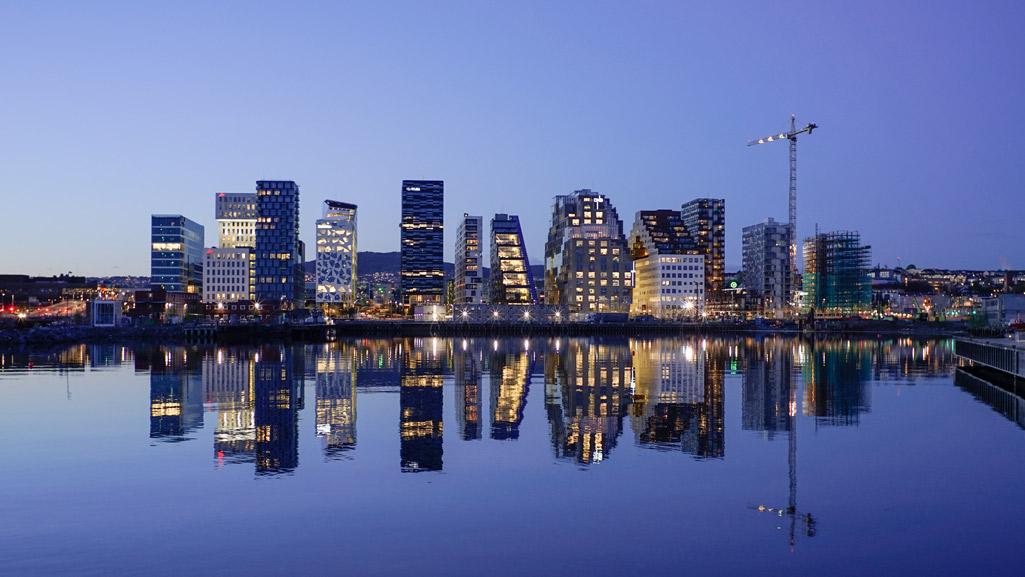Latest technology trends like autonomous vehicles and Mobility as a Service (MaaS) concepts will change the mobility landscape of cities all over world in the next few years. Norway’s capital Oslo wants to be prepared for this. Therefore, the local public transportation company Ruter commissioned a study to identify potential opportunities, risks and consequences for urban and transport planning that may arise from these new technological developments.
From a transport planners’ perspective, it is difficult to forecast the impact of autonomous vehicles and on-demand transit given the great number of uncertainties and the speed of change technology brings: For instance, will today’s car ownership be the same in the future? Will self-driving cars increase our desire to travel more? How quickly will society adopt autonomous driving? Like other previous studies, such as the famous Lisbon study by the OECD International Transport Forum, the Oslo study dares to look in this unknown future.
“Together with the Scandinavian consulting firm COWI we developed a PTV Visum transport model covering the region of Oslo and Akershus to underpin future mobility scenario testing of MaaS car sharing and ride pooling”, says Paul Speirs Director for Project Management & Services at PTV. “Our software allows us to analyse, in parallel, many combinations of shared mobility operational assumptions. For example, the total shared mobility traveller demand, the vehicle fleet size, the maximum waiting time for the traveller and the acceptable journey time detour for ride sharing.”
Six main scenarios were analysed
The purpose of the one-year Oslo study was to look into a future where autonomous vehicles and MaaS-based systems have replaced private car ownership. The mobility experts investigated six main scenarios where today’s car drivers and public transport users switch to shared, autonomous transport (car-sharing) – both with and without ridesharing. The analysis was based on the morning rush hour during a working day in Oslo and Akershus.
“In all of the scenarios examined, the number of cars on the road was reduced by between 84 and 93 per cent”, Paul Speirs explains some of the results of the Oslo study. “If people in the region would all share cars and use ridesharing, 7 per cent of the cars on the road today would be sufficient to cover all journeys in the rush hours. In other words, 93 per cent of cars will be redundant.”
It’s hardly surprising, that the scenario that produced the biggest reduction in traffic was where users of public transport continue to do so while car-drivers switch to ridesharing. This gave a 14 per cent reduction in traffic across the study area. Conversely, the volume of traffic would increase by 97 per cent if everyone who currently drives and everyone who uses public transport switched to car-sharing, but without ridesharing.
“MaaS-concepts can be particularly attractive for today’s public transport users. By switching to autonomous MaaS, their journey time reduces the most (an average of 11 minutes) whilst they also benefit of the door-to-door service. In the worst case, this could out-compete traditional public transport and traffic would increase significantly. Despite self-driving cars being able to use the road capacity more efficiently than human drivers, the current infrastructure would not cope with such an increase”, states the PTV expert. “On the other hand, MaaS systems could make public transport more attractive to people who currently drive their own cars, particularly if they are relieved of the financial burden of car ownership and destination car parking frustrations.”
Autonomous vehicles can only help achieve the traffic reduction targets, when integrated into a larger mobility system, but can worsen the situation if they are used as cars are today. Only an attractive public transport with integrated train, metro and bus services in combination with sufficient facilities for walking and cycling will assist in relieving the road network capacity. Integrating MaaS solutions as a complementary offer into the public transport network will be a vital part of making public transport more attractive and competitive, especially in areas with low public transport coverage. The solution of tomorrow’s mobility challenges lies within the combination of mass transit and integrated MaaS systems.
